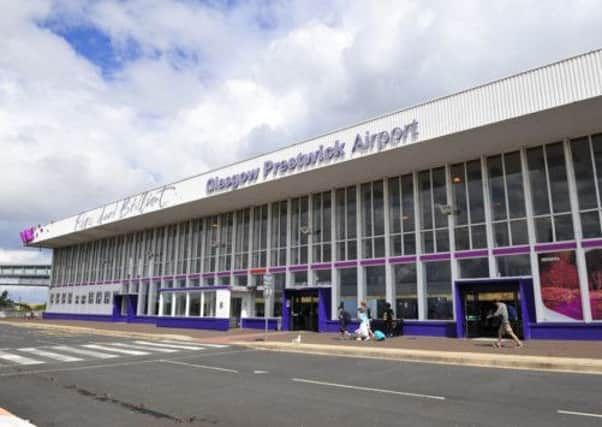Prestwick’s location gives it major influence


When the vast majority of air travellers are asked about the aviation connection of Ayrshire, the normal reply is “Prestwick Airport”.
Although this is not a wrong answer, a short distance away from the Airport is NATS’ Prestwick Control Centre, one of the lesser known reasons why Scottish aviation should never be considered just in the context of our national boundaries, but as a key element in the Global Air Traffic network – and more specifically as the European North Atlantic Gateway.
Advertisement
Hide AdAdvertisement
Hide AdThe Prestwick Centre is one of two air traffic control centres run by NATS, which is licensed by the Civil Aviation Authority to provide air traffic control (ATC) services in the UK. In total, NATS controls around 2.1 million aircraft per year throughout the UK in some of the most complex airspace in the world; the Prestwick Centre has responsibility for the largest area of airspace in Europe, providing ATC services to 1.1 million aircraft per year. Each and every day approximately 1,300 flights cross the Atlantic, with a record breaking day in June of 1,484 flights, under the control of the Prestwick Control Centre.
Over 800 people are employed here, in a joint and integrated operation with our military counterparts. The building provides a secure, efficient work space with a robust IT infrastructure to provide the highest levels of air traffic control safety and reliability, 24 hours a day, 365 days a year.
The current centre was opened in 2010 making it one of the most modern centres in Europe, but the ATC relationship with Ayrshire goes back some 70 years with the early centre operations, Redbrae, dating back to the 1940s.
In 1999 the European Commission launched the Single European Sky (SES) programme with the objective of modernising the European ATC network.
As the SES title would suggest, the strategic intent is not to have 28 European States managing their airspace independently at some 65 control centres – which is what exists today. This initiative aims to achieve improvements in ATC capacity, reduce ATC service provision costs, enhance safety and do more to address the environmental impact of aviation – in a harmonised approach across Europe. It also includes harmonising technologies to work inter-operably across Europe through a major research, development and implementation programme called SESAR. Worldwide there are similar programmes with, for example, the USA administering their equivalent called NextGen.
Fortunately, Prestwick’s geographical location gives us the opportunity to develop influential and meaningful relationships. The North Atlantic portion of the airspace covered by Prestwick means we control aircraft transitioning between Europe and North America, which allows us to be a key driver in SESAR-NextGen harmonisation.
The SES programme is currently going through its third EU legislative revision, but it is clear that ATC is most definitely on a transformational path. So what will all this mean for the NATS Prestwick Control Centre? In short – new technology, new methods of operation and a requirement to develop employees’ operational capability to ensure we maintain the safety and service qualities that NATS is renowned for.
It is undoubtedly a very exciting time in the aviation industry. Not only are new technologies enabling revolutionary change in how air traffic is managed, but countries around the world are looking at successful models of liberalised ATC service provision and considering different ways of delivering their service.
Advertisement
Hide AdAdvertisement
Hide AdIn the UK, the CAA’s Future Airspace Strategy (FAS) is already modernising the airspace system.
By the early 2020s, our ATC operation will be very different from today, comprising a new ATC working environment and technology; new airspace structures to optimise aircraft trajectories; reductions in CO² emissions; diminished environmental impacts; and more efficient airport operations.
At NATS, we engage with stakeholders across the aviation community and that has helped us to keep ourselves at the very forefront of the industry.
We are able to respond quickly to changing demands and integrate new technologies and that is what we will continue to do at Prestwick to ensure we lead the charge of change and meet current and future airspace needs.
• Alastair Muir is operations director (Prestwick), NATS; He speaks at The Scotsman Conferences’ Future of the UK Aerospace Industry, 5 September